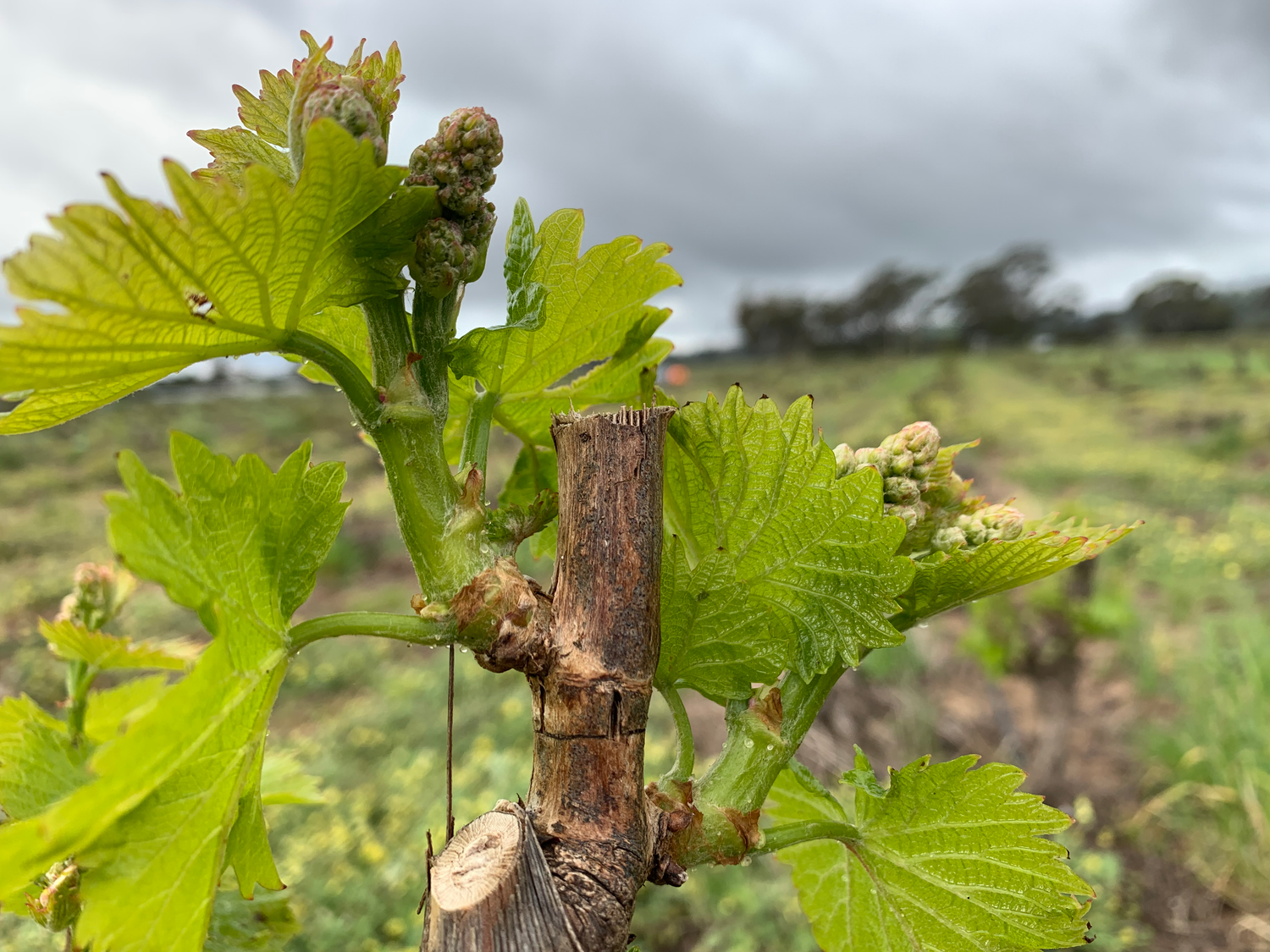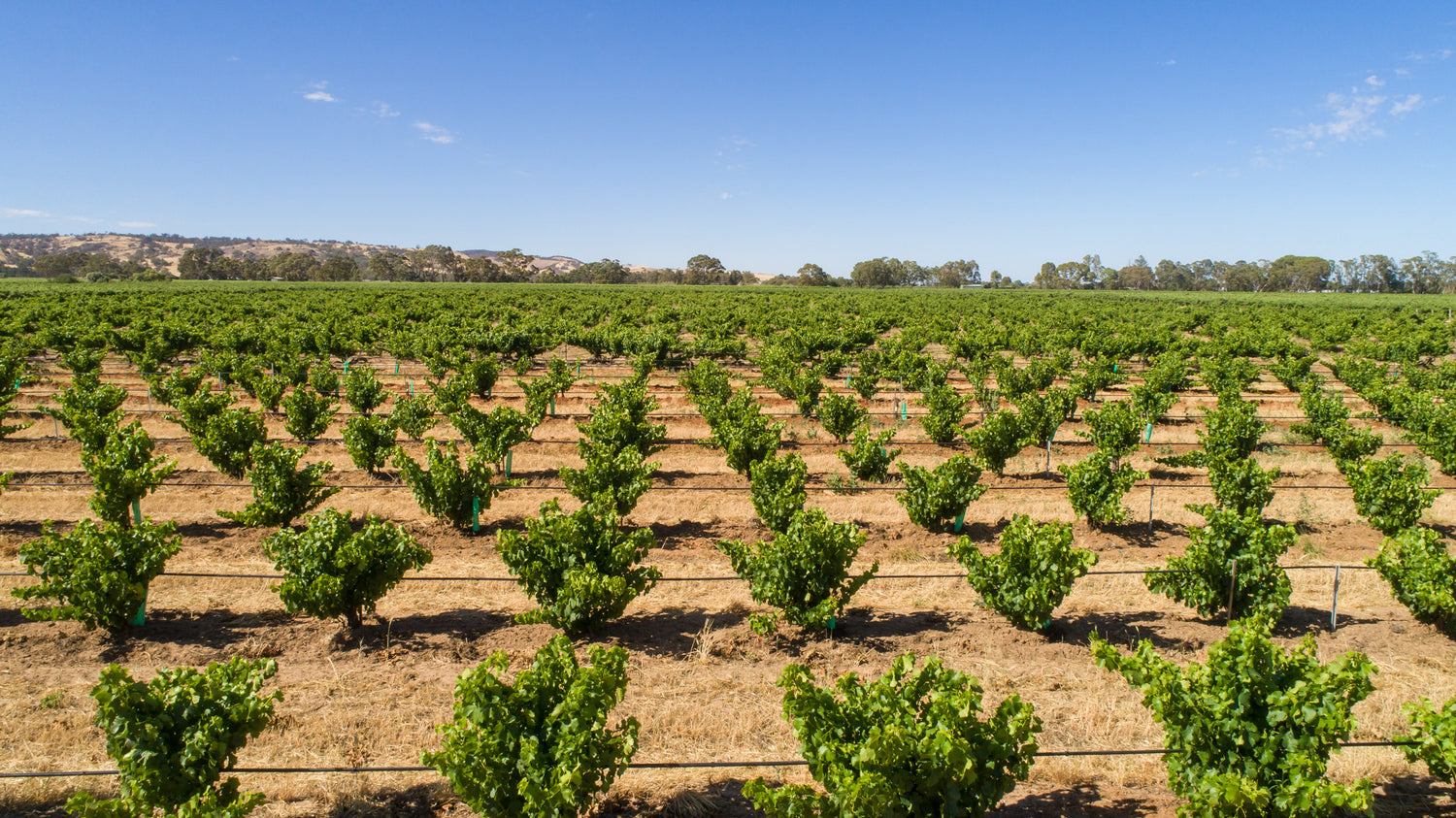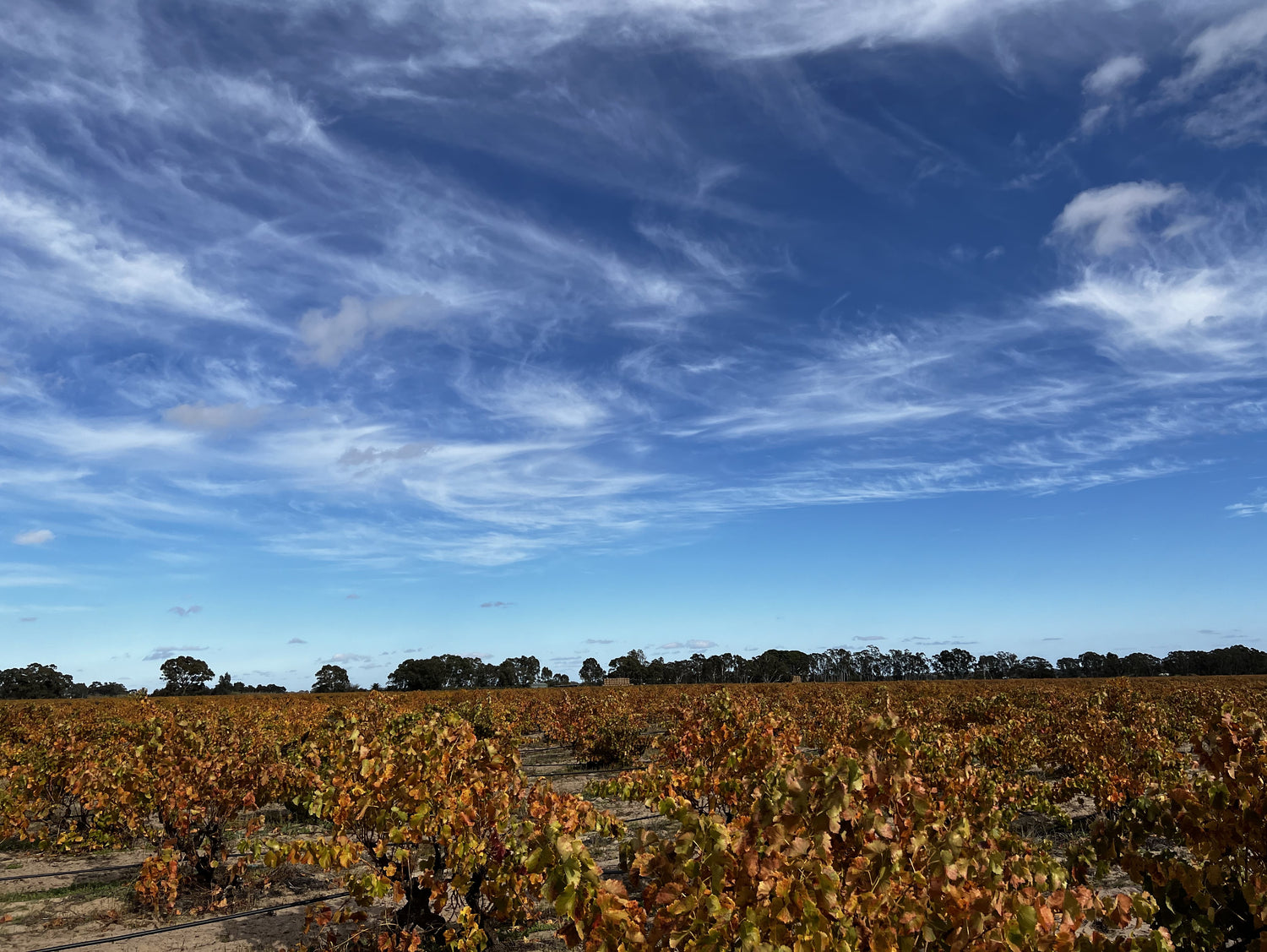Vineyard
An opportunity that would not come a second time.
This story starts with a chance meeting in the coastal town of Cadaques in North Eastern Spain, it ends with the hand-over of an old patch of vines in need of love, attention and hard work on the deep sands of Vine Vale in the true heart of the Barossa Valley.
Vinya Vella is the name we have given to this small parcel of land, it is just under 6 ha, of which 4 ha have very old gnarled vines dating back to early 1900's. The land is located in Vine Vale which is a small area on the eastern edge of the valley below the slopes of the higher Eden Valley. Here the soil is special due to it's very deep water table and very sandy profile which overlies a sandy yellow-red clay. These attributes mean vines have moderate nutrition from the sand in spring, for growth, yet long term availability of stored water within the deep clay to remain healthy in a hot dry summer.
This vineyard is the only source of fruit for our wines, it is managed and run by myself, Dylan and my dad Paul. We have some help at key times when important tasks are required and the labour and speed of two is impossible to keep up. This includes harvest and shoot thinning or leaf plucking time.
As an international viticulture consultant I travel and visit many vineyards in a vast array of growing regions, this provides me with ideas and a wealth of knowledge that I can distil and implement in our vines. This is an exciting challenge and an opportunity to share my love of viticulture through wine. I also get to trial and experiment with viticultural techniques and experiments that may be lost from the past or cutting edge and new.
The vineyard is predominantly Grenache Noir with a sprinkling of Mataro and Tinta Caida. There are three plantings:
2019 (1.15ha)
1995 (0.72ha)
ca1900 (4.04ha) - very old vines (read about that here)
2023 (one row of Shiraz :) Now grafted to Palomino and Canocazo from Stonegarden.
One look at the vines and you can see they are weather-beaten and gnarled showing their age in both growth rate and also rate of decay. I have significant experience in old vine vineyards and having a PhD in vine age, I can assure you the "very old vines" are easily more than double my age. As for an exact number, we are still following the threads of local history to find out for sure.
All the vines are pruned and trained to form bush vines, traditional in the Barossa Valley and Mediterranean Europe where Grenache comes from. This training provides maximum light exposure to the canopy but also shelter to the grapes within. This balance of growth and fruit is carefully managed each season, dappled light on the bunches and buds for fruitfulness but enough protection to prevent burn or rapid ripening from the summer sun. The short pruning restricts yield and limits the spread of wood disease as no cuts are made into old wood.
In wine regions around the world, the oldest vines are almost exclusively short pruned, bush vines. This is due to this system being the least damaging training system to the vines structure. We hope that by continuing this labour intensive technique these vines can produce balanced healthy crops and continue to live for many decades to come.
Dylan
Technical Specs:
Soil
Light brownish grey to white fine sand with ironstone and quartz gravel above yellow brown sandy clay.
Vine Training
All vines on Vinya Vella re trained as bush vines, from the young vines to the old vines spur pruning is practiced.
Grenache is an upright variety which lends itself to this style, the bush structure shades the soil and protects the fruit.
Bush training prevents large pruning cuts and allows vines to grow large and to very old ages without restriction.
Varieties
Site:
99% Own rooted Grenache.
Very old vines:
Right now the site is "heritage clone" Grenache, this means we don't really know much other than it's pre-phylloxera and very old. As with many old sites this would be a mass selection and therefore polyclonal.
Several unknown vines within the old vines have been DNA tested, this revealed they are a lost Spanish variety called Tinta Caida or Parrelata.
Young vines (30 and 4 year old):
These were propagated from cuttings selected from the strongest old vines within our own vineyard.
Watch this space.
Weed Control
Competiton for nutrients and moisture are controlled under the vines with a mechanical knife and by hand. The soil is so sandy that it virtually has no strucutre, knifing allows us to cut under the growing weeds disturbing their roots so they then dry in the sun.
The mid row is currently managed with an annual cover crop, this year Lupins and Triticale. Every 10th row is seeded with a multispecies blend chosen specifically for flower production to attract and encourage beneficial insects.
The mid row is mown retaining stubble during summer to hold the soil and prevent erosion.
Water
You may see irrigation tubes in some images, the young 4 year old vines have irrigation. Establishing vines in sand without this is difficult to near impossible, water is applied to guide the roots into the clay. Once they are established minimal water is required.
The old vines have irrigation tubes also, however there are only emitters where there is a re-planted baby vine. There are ~500 re-planted vines out of 3600 places. Interplant competition is so strong in old vineyards and the sand is so deep that some water is required for the young vines to survive the early years. This tube is laying on the ground as it is not considered permanent infrastructure. It will be removed at a later date.
Longer Reads:
The lead-up to vintage 2023
Here is a nerdy pre-vintage ramble about the Barossa Valley growing season as we waited for the grapes to ripen.
February 2023 - A Viticultural Season to Remember
Vine Vale
Vine Vale is a small area in the eastern section of the Barossa Valley, characterised predominantly by sandy soils and cooling winds from the more elevated Eden Valley. The name Vine Vale is likely linked to its long serving suitability to grape ‘vine’ production since the early 1800’s.
A longer read on the climate, soil and history of Vine Vale.
Winemaking: The Hard Work is Done in the Vineyard
When it comes to winemaking for the Vinya Vella old vine Grenache the approach is simple, catch the fruit as it ripens to make a bright, elegant, lifted and medium bodied wine with texture and clarity.
Vine Age: Vine Vale is Old, Vinya Vella is Very Old
Grenache is a Jewel, Old Vine Grenache is a Rare Jewel.
Vintage conditions 2022
Some greater detail behind the vintage that shaped the 2022 wine






